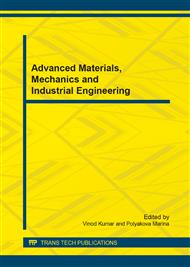p.109
p.114
p.119
p.124
p.129
p.135
p.141
p.146
p.151
Performance Improvement on Axial-Flow Fan by Imposing Proper Frame Ribs
Abstract:
Generally, most research attempts on the axial-flow fan focus on optimizing rotor blade and tip clearance to enhance its aerodynamic and acoustic performances. Few efforts aim at finding out the appropriate frame rib, which is a supporting and vital part within the air passage and thus has significant influence on the turbulent flow near the blade trailing edge. Therefore, this study intends to investigate the geometrical parameters of the frame rib systematically by using an integrated scheme, which consists of numerical simulation, mockup fabrication, and experimental verification. At first, a high-performance fan (90×90×38 mm3) is constructed to serve as the sample fan for this investigation. Then three geometrical sections (triangle, cylinder, and arc) of frame rib are examined systematically to provide a design guideline on utilizing the appropriate frame rib for enhancing the fan performance.
Info:
Periodical:
Pages:
129-134
Citation:
Online since:
July 2014
Authors:
Price:
Сopyright:
© 2014 Trans Tech Publications Ltd. All Rights Reserved
Share:
Citation:


